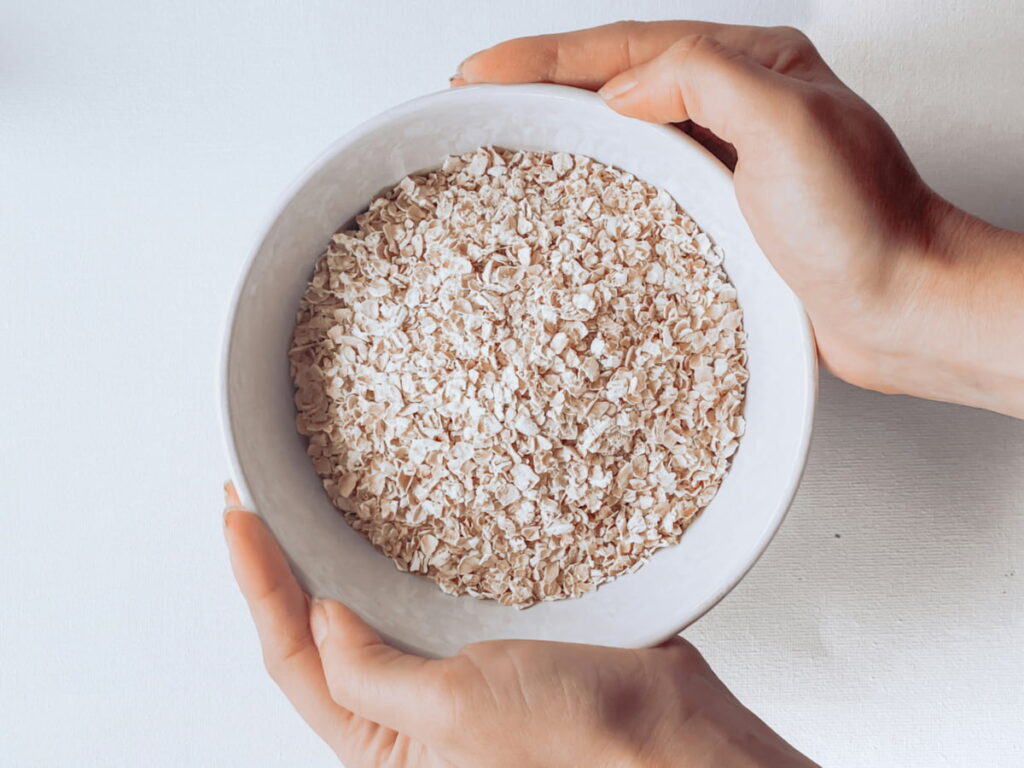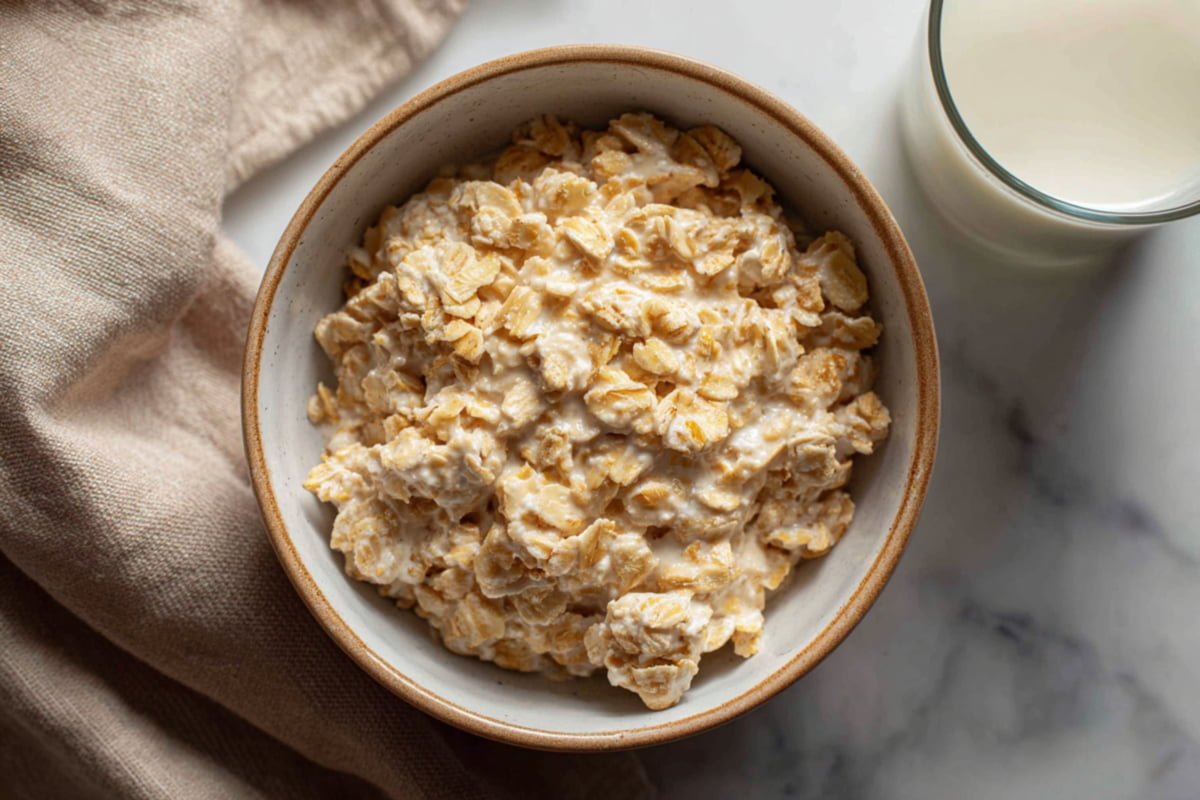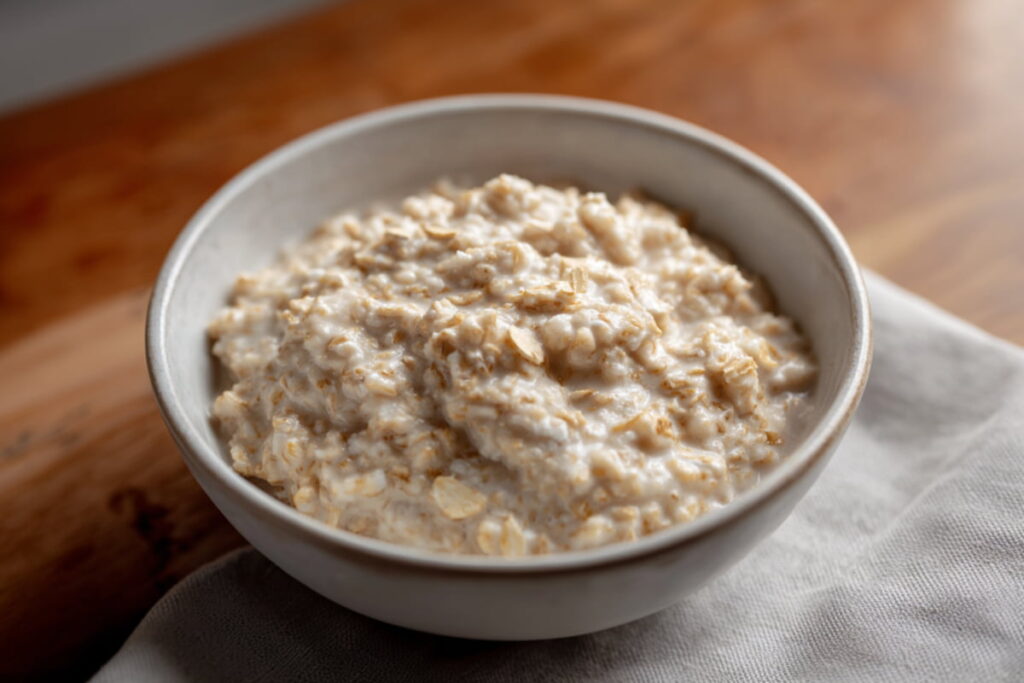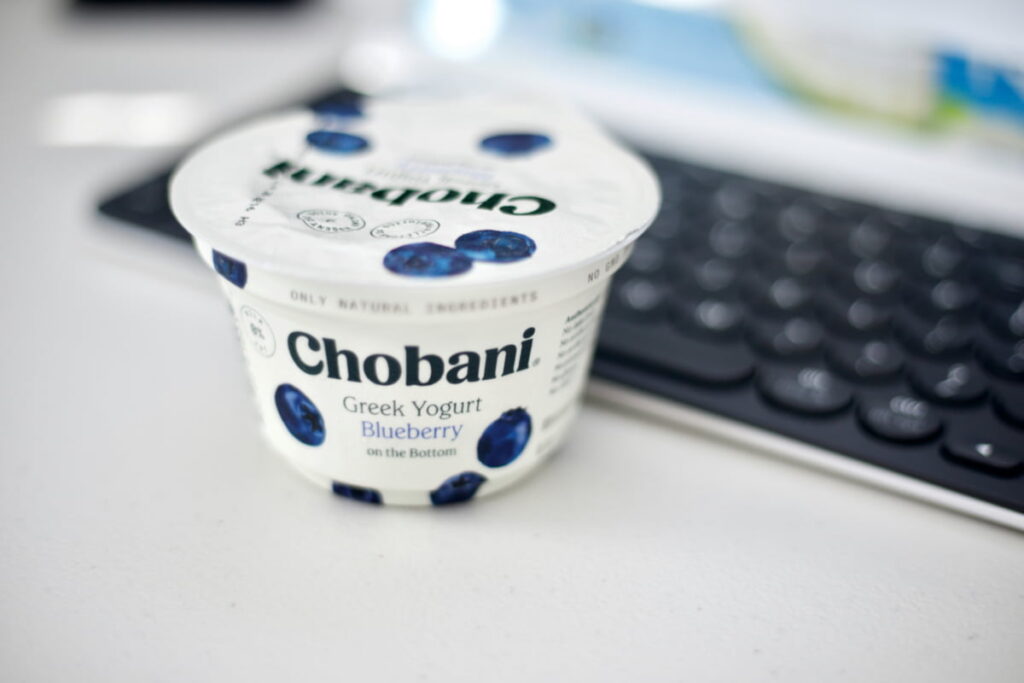
If you’ve ever opened the fridge to find your leftover oatmeal looking like a cold, gray brick, you know the pain. It’s dry, dense, and about as appetizing as drywall paste.
Reheating oatmeal should be easy, but if you’ve ever ended up with scorched edges or a bowl of lava on top and ice in the middle, you’re not alone.
The good news? You can reheat oatmeal, and make it taste just as creamy and cozy as when it was fresh, if you do it the right way.
Quick Answer: The Best Way to Reheat Oatmeal
Here’s how I usually reheat oatmeal without drying it out:
- Add moisture: Start with 2–4 tablespoons of milk, water, or your favorite non-dairy alternative, just enough to loosen it up. If it still looks thick or dry after stirring, add a bit more, a tablespoon at a time, until it moves easily when you stir. (Oatmeal’s a little unpredictable; some mornings it drinks up liquid like a sponge.)
- Reheat gently:
- Microwave: Heat for 30 seconds, stir, then repeat until warm.
- Stovetop: Warm over medium heat, stirring constantly for 3–5 minutes.
- Finish smart: Add a drizzle of maple syrup, some granola, butter, or a splash of cream to bring the texture back to life.
Best results: The stovetop gives you the silkiest texture.
Quick fix: The microwave works if you stir often and watch the heat.
Why Reheating Oatmeal Is Trickier Than It Should Be

Here’s the thing about oatmeal: it’s basically a sponge. Leave it in the fridge overnight, and it turns into a cold, heavy brick that barely resembles the creamy bowl you made yesterday.
And clearly, I’m not the only one traumatized by reheating oatmeal. As one person on Twitter put it:
I used to think that meant it was ruined, but there’s real food science behind it. When oatmeal cools, the starches tighten up and push out moisture, a process called retrogradation.
And since oats are loaded with beta-glucan (a fiber that loves to hoard liquid), they just keep soaking it up.
The trick isn’t more heat, it’s adding moisture back so those starches loosen up again.
The Golden Rule: Always Add Liquid

If I’ve learned anything, it’s this: oatmeal won’t revive without liquid. Skip it, and you’re eating paste. Same goes for grits, both need a splash of moisture to turn creamy again (how to reheat grits)
So, when reheating, remember, for every cup of refrigerated oatmeal, add 2-3 tablespoons of liquid. You can use:
- Milk (dairy or non-dairy)
- Water (it works, though it’s less creamy)
- A combination of both
- Even a splash of cream if you’re feeling fancy
Start with 2 tablespoons, stir it in, then add more if needed after reheating. It’s easier to add liquid than to fix oatmeal soup
I Tested Every Reheating Method, Here’s What Actually Works (and What Doesn’t)

Once I understood why my oatmeal kept turning into a cold, chewy brick, I wanted to see which reheating method could actually fix it, not just “make it warm again.”
I tried the most popular methods people swear by online, plus got some professional insight from a chef friend. Here’s the honest breakdown:
Method 1: The Microwave (When You Do It Right)
This is my go-to for busy mornings, but there’s a trick: use 50% power. I learned this from a Reddit thread where everyone was adamant about it, and they were absolutely right.
Add 2-3 tablespoons of liquid per cup of oatmeal, stir it in thoroughly, then cover with a damp paper towel. Microwave at 50% power for 1 minute, stir, then continue in 30-second intervals until heated through.
The low power setting prevents those dreaded hot spots and rubbery edges. Total time is usually 1.5-2 minutes for a single serving. It’s quick, it works, and the texture comes out actually creamy instead of like punishment porridge.
Method 2: The Stovetop (The Best Texture)
If you have an extra five minutes, this is the winner. The stovetop gives you the most control and consistently delivers the creamiest results.
Put your oatmeal in a small saucepan with 3 tablespoons of liquid per cup (I go slightly heavier here since some evaporates). Heat on medium-low and stir frequently—every 30 seconds or so. This isn’t a walk-away situation.
It takes about 3-4 minutes, and you’ll watch the oatmeal gradually transform back into its creamy glory. If it’s still too thick, just add another splash of liquid. This method is especially good for steel-cut oats, which can get really dense and stubborn in the fridge.
Method 3: The Double Boiler (The Chef’s Choice)
My friend who’s a professional chef swears this is the best method for perfect texture every time. I’ll admit—I haven’t personally tested this one on my regular Tuesday mornings because it feels like overkill for a single serving. But here’s what he told me:
Place your oatmeal in a heatproof bowl over a pot of simmering water. Add your liquid and stir occasionally. The indirect, gentle heat means virtually no risk of scorching or creating hot spots. It takes 5-7 minutes, but apparently the results are foolproof and consistently smooth.
He uses this method when reheating oatmeal for brunch service at the restaurant, particularly with steel-cut oats. According to him, it’s the only way to guarantee perfect texture when you’re doing larger batches. For a busy home kitchen, it might be more effort than it’s worth, but if you’re particular about texture or reheating for multiple people, it’s worth considering.
The Methods I Don’t Recommend
The “straight from fridge” microwave blast: I tried this first (like most people probably do) and it’s exactly as bad as you’d expect. Dry, uneven, with a cold center and nuclear-hot edges. Don’t do this to yourself.
High power microwave: Before I learned the 50% power trick, I was nuking oatmeal on high like a barbarian. It creates rubbery edges and somehow the middle stays cold. Physics is weird.
Bonus: Flavor & Texture Upgrades

If you’re going through the trouble of reviving oatmeal, make it exciting again. Try one of these upgrades:
- The Creamy Revival: Stir in a spoonful of Greek yogurt or almond butter.
- The Fresh Start: Add sliced bananas or berries after heating.
- The Crunch Factor: Sprinkle with granola or toasted nuts.
- The Coffeehouse Trick: A splash of vanilla or pinch of cinnamon makes it taste fancy.
- The Sweet-Salty Balance: Always finish with a touch of salt, it makes the sweetness pop.
So, Don’t Toss Your Oatmeal Just Yet
Cold oatmeal isn’t a lost cause, it just needs a little help.
Add some liquid, reheat it gently, and you’ll be surprised how close it gets to fresh-off-the-stove creamy. Your spoon (and your morning) will thank you.
If you’ve got your own oatmeal rescue trick, drop it in the comments, I’d love to hear how you bring your leftovers back to life.
And if reheating breakfast has become your new hobby (no judgment), check out my full guide to reheating food the right way
